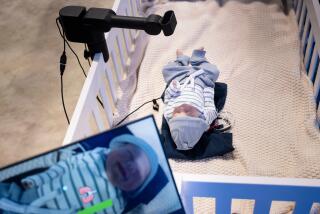Windows users: Don’t get disconnected from the Web on July 9
It’s July 9, and there’s no email in your usually frenetic Web-based inbox. Your friends on Facebook and Twitter have fallen silent. Searches are fruitless, and the music has stopped on Pandora and Spotify. Your convenient home office setup has been reduced to the small screen of your smartphone.
Not exactly a digital doomsday scenario. But, you could be cut off from the wealth of information, productivity and community of the Web if you are one of the 300,000 Windows users affected by malware that surreptitiously redirected your Internet excursions.
Relax. It affects only a small number of the millions of Internet users in the U.S. But if it affects you, you’ll probably feel isolated from the connected world you’ve become accustomed to.
A sophisticated online fraud scheme infected more than 4 million computers in more than 100 countries with malware that hijacked computers to redirect them to sites that enabled the scammers who were driving the scheme to be paid for every click and visit, according to the to the FBI.
At least 500,000 computers were in the United States, including some belonging to agencies such as NASA, educational institutions, businesses, nonprofits organizations and people.
And this brings us back to your computer. Why does this affect you?
On July 9, the FBI will be shutting down the servers that scammers used to make money off your misdirection. If your computer’s DNS server address has been redirected to the scammers’ servers by this malware, you won’t be able to go anywhere online and you might not easily figure out what’s up.
So here’s some guidance on what you’ll need to do before July 9.
How do I know whether my computer is affected?
First of all, the malware infection was isolated to computers running the Windows operating system, said Kevin Haley, director of security technology and response for Norton at Symantec Corp. Before July 9, you can go to DNS Changer Check-Up, which will give you either a green all-clear screen or a red background indicating malware infection.
The checkup site notes that, “if your ISP is redirecting DNS traffic for its customers you would have reached this site even though you are infected.”
Remember, though, it’s not just about the malware infection. The malware changed the DNS server listed in your settings. So, even after you eradicate the malware, Haley said, the change it made hasn’t been fixed.
OK, what exactly will happen July 9 if my computer is affected?
The FBI is unplugging the scammers’ servers. And if that server was acting as your operator, then there will be no one on the other line to connect you. If your computer has been unwittingly hijacked, when you type in a Web address, instead of getting where you’re trying to go, you’ll probably get a message back on your browser saying something like “site not found,” Haley told The Times in an interview.
How do I fix it to stay connected?
You need to get a new DNS server address. You can call your Internet service provider to get one. Or some external services and antivirus detectors offer that service. If you already subscribe to one, such as Symantec, you’ll need to ask it for a new DNS; it won’t switch you without your permission, Haley said.
Let’s say I didn’t catch it in time. How can I fix the problem if I’m disconnected from the Internet?
If you can’t easily diagnose another problem -- loose cables and the like -- and you find yourself with no access to tools online, you should contact your Internet service provider for assistance.
What again is a DNS server, and why should I care?
Very simply put, surfing the Web works a bit like calling a friend from the contact list in your cellphone. To make the call, you simply tap a name instead of typing out the actual number. (Who remembers numbers these days, anyway?) Online, to reach a website, you type in words -- a Web address such as www.latimes.com/tech -- to reach a certain site, instead of the IP address, its “phone number.”
Way back when phones were both stationary and rotary -- and not digital and mobile -- an operator connected your calls. The DNS server is that operator, converting those words into the numbers of the computer site you’re trying to reach.
And if there’s no operator, you won’t get connected.
RELATED:
Lying online is no longer a crime in Rhode Island
FTC offers tips on protecting kids from identity theft
FBI sting nabs about 24 alleged online credit card scammers
Follow Michelle Maltais on Google+, Facebook or Twitter







